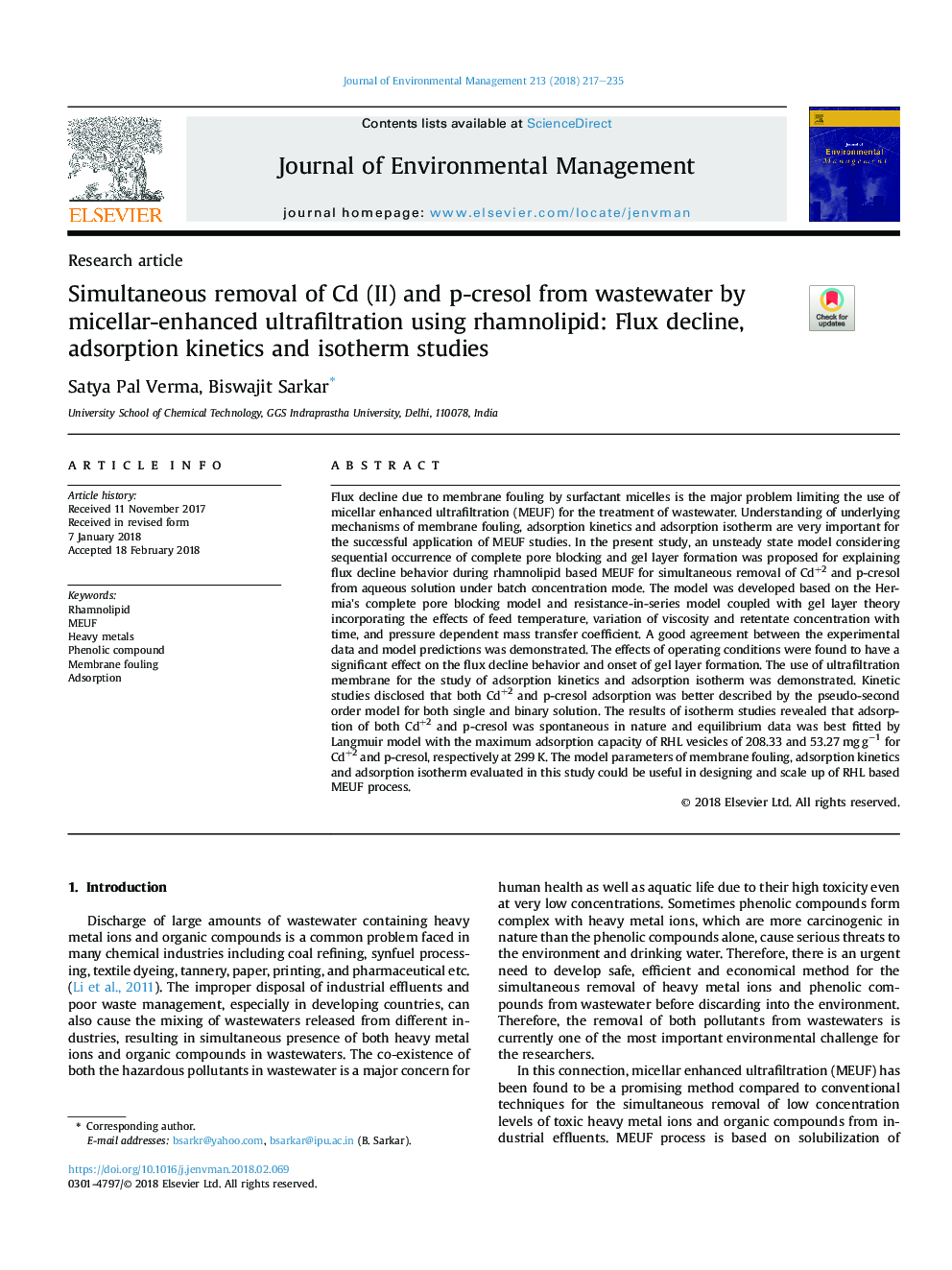| کد مقاله | کد نشریه | سال انتشار | مقاله انگلیسی | نسخه تمام متن |
|---|---|---|---|---|
| 7477781 | 1485205 | 2018 | 19 صفحه PDF | دانلود رایگان |
عنوان انگلیسی مقاله ISI
Simultaneous removal of Cd (II) and p-cresol from wastewater by micellar-enhanced ultrafiltration using rhamnolipid: Flux decline, adsorption kinetics and isotherm studies
دانلود مقاله + سفارش ترجمه
دانلود مقاله ISI انگلیسی
رایگان برای ایرانیان
کلمات کلیدی
موضوعات مرتبط
مهندسی و علوم پایه
مهندسی انرژی
انرژی های تجدید پذیر، توسعه پایدار و محیط زیست
پیش نمایش صفحه اول مقاله

چکیده انگلیسی
Flux decline due to membrane fouling by surfactant micelles is the major problem limiting the use of micellar enhanced ultrafiltration (MEUF) for the treatment of wastewater. Understanding of underlying mechanisms of membrane fouling, adsorption kinetics and adsorption isotherm are very important for the successful application of MEUF studies. In the present study, an unsteady state model considering sequential occurrence of complete pore blocking and gel layer formation was proposed for explaining flux decline behavior during rhamnolipid based MEUF for simultaneous removal of Cd+2 and p-cresol from aqueous solution under batch concentration mode. The model was developed based on the Hermia's complete pore blocking model and resistance-in-series model coupled with gel layer theory incorporating the effects of feed temperature, variation of viscosity and retentate concentration with time, and pressure dependent mass transfer coefficient. A good agreement between the experimental data and model predictions was demonstrated. The effects of operating conditions were found to have a significant effect on the flux decline behavior and onset of gel layer formation. The use of ultrafiltration membrane for the study of adsorption kinetics and adsorption isotherm was demonstrated. Kinetic studies disclosed that both Cd+2 and p-cresol adsorption was better described by the pseudo-second order model for both single and binary solution. The results of isotherm studies revealed that adsorption of both Cd+2 and p-cresol was spontaneous in nature and equilibrium data was best fitted by Langmuir model with the maximum adsorption capacity of RHL vesicles of 208.33 and 53.27â¯mgâ¯gâ1 for Cd+2 and p-cresol, respectively at 299â¯K. The model parameters of membrane fouling, adsorption kinetics and adsorption isotherm evaluated in this study could be useful in designing and scale up of RHL based MEUF process.
ناشر
Database: Elsevier - ScienceDirect (ساینس دایرکت)
Journal: Journal of Environmental Management - Volume 213, 1 May 2018, Pages 217-235
Journal: Journal of Environmental Management - Volume 213, 1 May 2018, Pages 217-235
نویسندگان
Satya Pal Verma, Biswajit Sarkar,